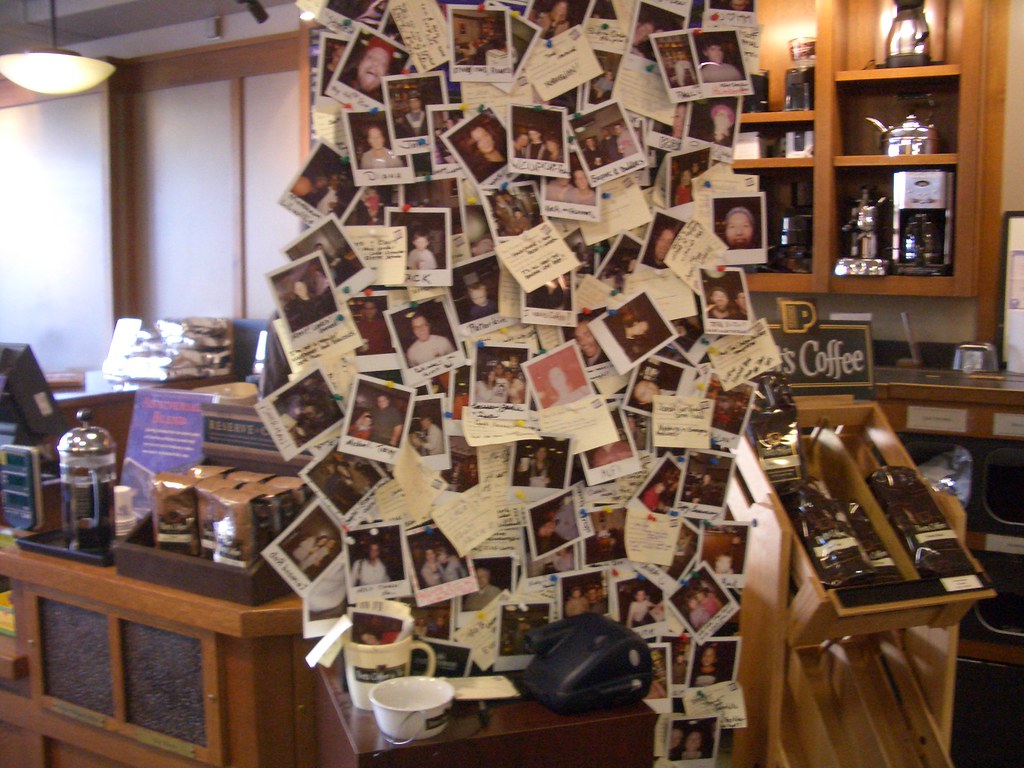 In the retail world, there's a big fear. That fear is called The Internet, and that fear is real. "Good god," say grocery stores and bookstores and coffee shops and gadget shops, "how can we ever compete with the power of a website? We'll never have that accessibility, that convenience, that dialogue."
In the retail world, there's a big fear. That fear is called The Internet, and that fear is real. "Good god," say grocery stores and bookstores and coffee shops and gadget shops, "how can we ever compete with the power of a website? We'll never have that accessibility, that convenience, that dialogue."Stores can take steps to compete. They can buy more real estate. They can stay open 24/7. They can allow people to "shop naked" (if they could just get around that whole indecent exposure thing).
But what is arguably the most powerful case for online merchants is that they create a dialogue. They leverage the opinions of willing and able consumers, hungry to tell the world that the Uggs they bought on Zappos are super comfortable but your feet get hot so don't wear socks. Consumers who can't wait to share not only which satellite radio receiver to buy from Amazon, but how to install it and why it sometimes doesn't work in tunnels.
We all share an innate human need to be heard. If retailers want to stay relevant, they can start by listening.
But how to listen in a physical space? It's not as easy as clicking on "Comments." Retailers need to get a little more creative.
So how about a suggestion box? Not so much. The original form of feedback solicitation, the suggestion box is an item of pure, passive humility. Your comments go into a black hole, where you will definitely never see them again. And it's a boring black hole! So suggestion boxes gather dust everywhere they live. Listening needs to be active, and it needs to be inviting.
If you think active listening in a retail space can't be done, check out this article about RanKing RanQueen, a shop in Tokyo. Based on sales data, they literally rank items in the store by category. They put a little "1" next to the number one toothbrush. And a "2" next to the number two toothbrush. And they only carry the top 5 toothbrushes! This store is listening every time the register rings. And it is sharing shoppers' feedback in a way that sways crowds. I mean, why would you buy the number 4 candy bar?
This active listening is phenomenal, given the operational constraints that most retailers would whine about. But what this store is not doing is asking shoppers to go out of their way. And getting feedback to be appealing is a little harder. Hotels and restaurants hand out comment cards, but what's my motivation to fill these out? I'd be entered into a drawing? Again, not so much. If you want to hear what your shoppers have to say, make it inviting.
Peet's Coffee is doing just that. Their in-store bulletin board has a Polaroid camera, on and loaded, and a little tearpad with questions. What's your favorite Peet's drink? What's your best Peet's memory? Thoughtful, inspiring, borderline cheesy. But right on brand. Still, who's gonna stop and give feedback? What's my motivation?
My motivation is that Polaroids are fun. That there's nothing more fascinating to look at than another person's face. That I want to read about personal preferences because they are intimate. That I want to join this community because look how many people already have!
I don't know if Peet's is learning anything revolutionary about its products and services. But they are speaking their message loud and clear: "We are listening." And somehow, I felt closer to Peet's after writing about my chai tea latte. If some other coffee shop sold their products online, would I be interested? Maybe. But this retailer is holding onto its space in the mind of the consumer - not because it's convenient, or cheap, or even providing products I need, but because it's starting a dialogue.
If all retailers learned how to listen, I might buy my next book from a store.

2 comments:
Great examples. I think one component of both the Polaroid and the toothbrush is that the customers provide information in to the store and the store provides the information back out to the customers.
The customers have a voice. They shape the merchandise being carried, or they shape the decor. It's participation or (buzzword alert - ulp) co-creation, at some level.
Customers aren't being asked to redecorate the store, but to create a teeny artifact that will contribute to the store itself. And it's very very personal - it's a picture of them!
Suggestions boxes can really blow, although I have enjoyed the ones at my old Y, or even university libraries, where the cards are posted on a bulletin board, including replies from the staff. Mostly I get a voyeuristic superior buzz out of that, however. Look at how raving and inarticulate people are!
I personally think the instant gratification of picking up, smelling, feeling, etc. a book, then going over, buying and taking it with my RIGHT THEN is why I still buy books from stores.
I hate not having my shit right away and being able to touch it and see if I like it. I will never buy clothes online.
Post a Comment